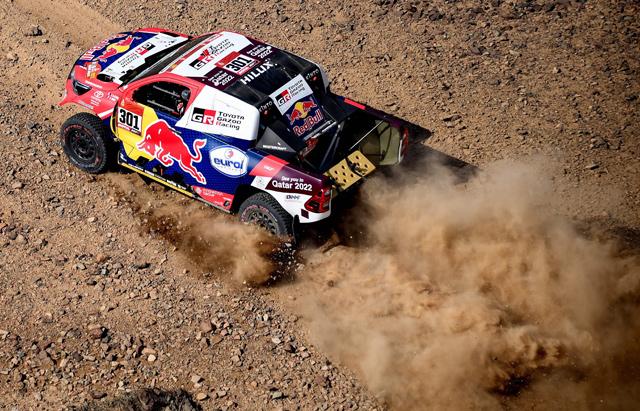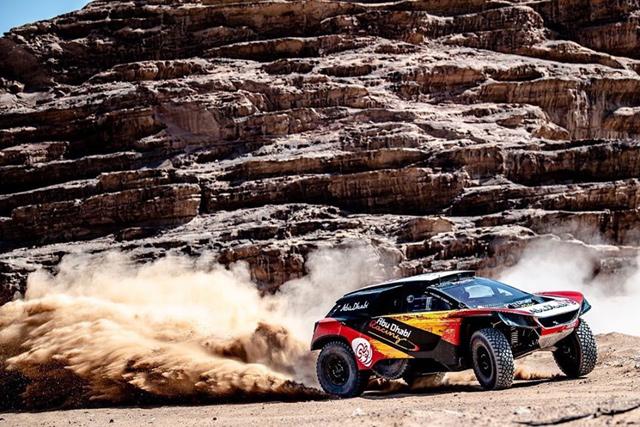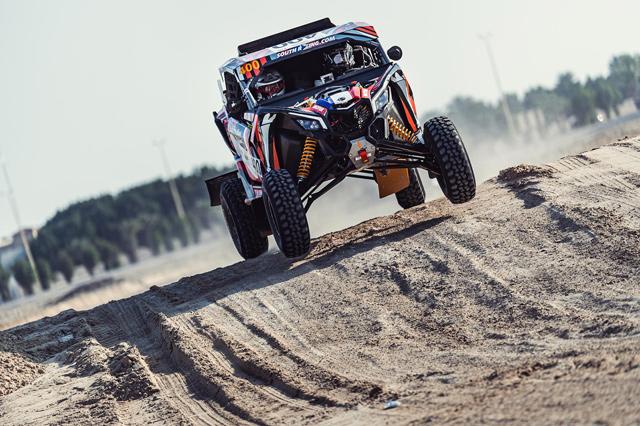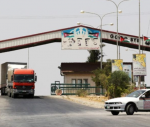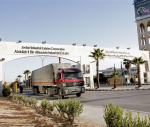You are here
Dakar Rally 2021 plunges offroad stars down Saudi Arabian dunes
By JT , AFP - Jun 14,2020 - Last updated at Jun 14,2020

Stephane Peterhansel of France and Paulo Fiuza of Portugal from the Bahrain JCW X-Raid Mini Team race during Stage 10 of the Dakar Rally 2020 from Harad to Shubaytah, Saudi Arabia, on January 15 (Photo courtesy of Flavien Duhamel/Red Bull)
AMMAN — The planet’s toughest test of motorsports endurance returns to Saudi Arabia in the New Year as a brand-new Dakar Rally route will push committed petrolheads to the limit over diverse landscapes.
After four decades of desert action in Africa and South America, a stunning debut in the Arabian Peninsula earlier this year saw the Dakar capture the imagination of adventurous rally fans the world over once again. In January 2021, the world’s toughest rally is heading back to Saudi Arabia for another fortnight of exhilarating offroad action.
The Dakar convoy will start their 2021 odyssey on the shores of the Red Sea as they depart Jeddah on January 3. Competitors will spend the following two weeks navigating their way through Saudi Arabia’s expansive deserts. A well-earned Rest Day will come in the ancient city of Ha’il at the midway point on January 9.
A hero’s reception awaits those who manage to meet every challenge and cross the finish line back in Jeddah on January 15. The winners of each category (Car, Bike, Truck, Quad and UTV) will be celebrated on the podium, but everyone who completes the Dakar has the right to be satisfied at overcoming the toughest test of endurance.
As well as a new route for 2021, further innovations will be added to the mix to increase the sporting challenges of the event while always prioritising participant safety. Handing out the roadbook of a stage just 10 minutes before racing starts will bring navigation skills to the fore. Also, among the new regulations are strict rules governing tyres. No tyre changes will be allowed in the car category during the marathon stage while each motorbike will be granted a total of six rear tyres for the entire rally.
To ensure competitors remain as safe as possible there will be audible warnings ahead of danger zones. Furthermore, certain hazardous sections will be categorised as “slow zones” where the speed limit will be set at 90kph. Airbag vests will now be mandatory and subject to inspection by race officials during technical scrutineering.
Dakar Rally director David Castera said: “[During the 2020 Dakar] stage after stage, and often multiple times within the same stage, the majestic landscapes of the region left us dazzled and in awe. However, Saudi Arabia only revealed a tiny part of its mysteries, leaving plenty of surprises in store for the next edition in January 2021.”
Also new in 2021 will be Dakar Classic, a parallel contest for vintage vehicles that will use the same start and finish points. In a nod to the unique heritage of the rally, memorable machines from the past such as the Renault 20, Lada Niva, Toyota Celica, Land Rover Defender and Porsche 959 are expected on the start line of the inaugural race.
Fresh route, new safety measures
The second edition of the Dakar Rally in Saudi Arabia will start and finish in Jeddah after venturing through the desert and along the Red Sea, organisers revealed on Thursday.
The 2021 version of the gruelling 12-day marathon will take participants into uncharted territory, with all timed sections of the loop course brand new to the race.
Competitors will set off from Jeddah towards the east and then head north, with a rest day in Ha’il on January 9, before tracing the Red Sea coastline back to the finish.
“We’ve made the most of all of Saudi Arabia,” Castera told AFP. “The country is so big that we managed to only use 50-100km of this year’s course.
“During each stage we find a bit of all the ingredients. We tried to keep a bit of the dunes, the technical sections and the quick parts each day.”
Following the deaths of two motorcyclists, Portugal’s Paulo Goncalves and Dutchman Edwin Straver, on this year’s rally, enhanced safety measures will be introduced in 2021.
Riders will be forced to wear airbag vests, while aural warnings will notify competitors in the approach to potential dangers with designated “slow zones” limiting the speed to 90kmh in especially tricky sectors.
Following a test run in 2020, road books will be distributed to participants just before the start of each stage, as opposed to the previous evening. Digital versions will be available in certain categories.
Castera said the coronavirus pandemic had forced organisers to revise their plans for next year’s rally.
“We had mapped out a Dakar with other countries. Unfortunately, the week of confinement we should have left for a tour. We weren’t able to do it, so we were obliged to abandon our project for this year,” he said.
“We’ll do it another time. We have three surrounding countries who want it and fit in with our DNA: Oman, the United Arab Emirates and Jordan.”
Castera also conceded the financial impact of the global health crisis would likely result in fewer participants over the next two years.
The event, launched in 1979 with its original route between Paris and the Senegalese capital Dakar, moved to Saudi Arabia this year after a decade in South America, a decision which sparked an angry reaction from human rights organisations.
Related Articles
JEDDAH, Saudi Arabia — The Dakar Rally kicked off yesterday in Saudi Arabia, the second time the world's most gruelling event in motor
AMMAN — Three gladiators of world cross-country rallying will lock horns and battle it out for FIA World Cup for Cross-Country Bajas at this
AMMAN — The Jordan Baja gets underway in Aqaba on Thursday evening and sees Jordan Motorsport hosting its first international motor sporting


